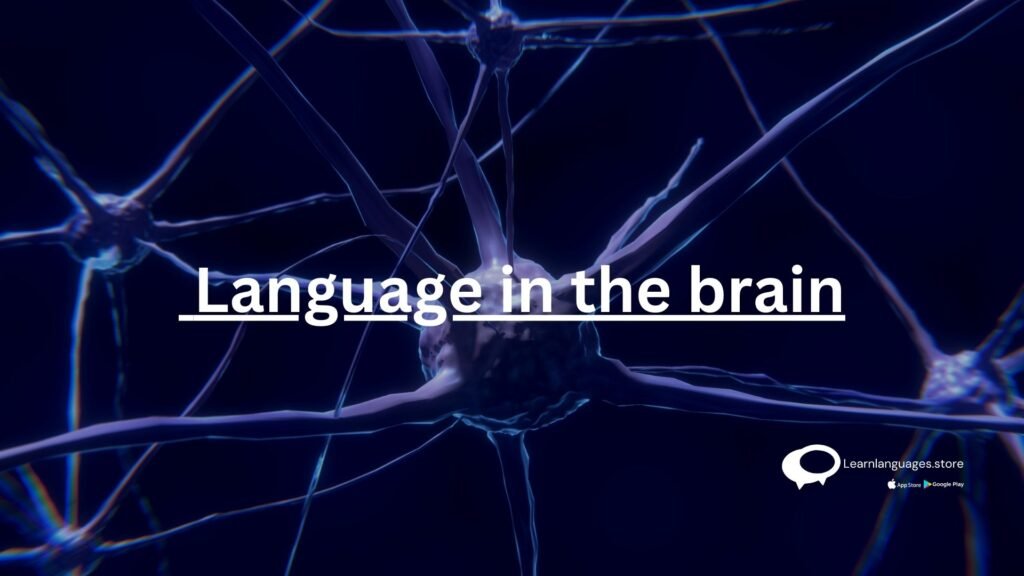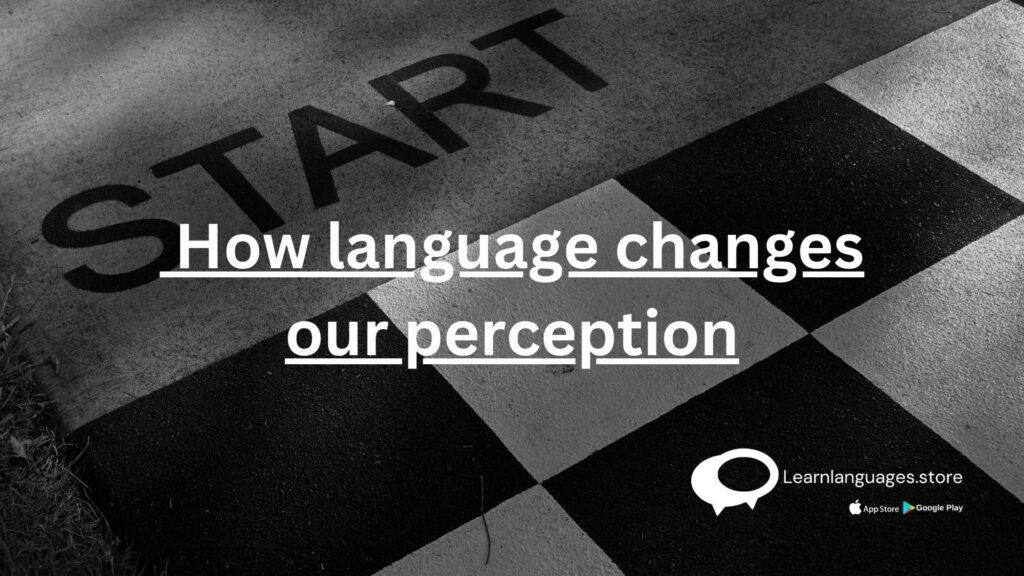Do languages shape our brains and our lives
Do languages shape our brains and our lives
What do languages do to our brain? Language holds such power over our minds, decision-making processes, and lives, so Broditsky encourages us to consider how we might use it to shape the way we think about ourselves and the world.
Estimated reading time: 8 minutes
Language and communication are as vital as food and water. We communicate to exchange information, build relationships, and create art. In this Spotlight feature, we look at how language manifests in the brain, and how it shapes our daily lives.
1. What makes human language special?
When did spoken language first emerge as a tool of communication, and how is it different from the way in which other animals communicate?
As Prof. Mark Pagel, at the School of Biological Sciences at the University of Reading in the United Kingdom, explains trusted Sources in a “question and answer” feature for BMC Biology, human language is quite a unique phenomenon in the animal kingdom. Do languages shape our brains and our lives, Go ahead keep on reading to know more!
While other animals do have their own codes for communication — to indicate, for instance, the presence of danger, a willingness to mate, or the presence of food — such communications are typically “repetitive instrumental acts” that lack a formal structure of the kind that humans use when they utter sentences.
By contrast, Prof. Pagel adds, that human language has two distinctive characteristics. These are:
- that it is “compositional,” meaning that it “allows speakers to express thoughts in sentences comprising subjects, verbs, and objects”
- that it is “referential,” meaning that “speakers use it to exchange specific information with each other about people or objects and their locations or actions”

2. Origins and importance of language
As Homo sapiens, we have the necessary biological tools to utter the complex constructions that constitute language, the vocal apparatus, and a brain structure complex and well-developed enough to create a varied vocabulary and strict sets of rules on how to use it.
Though it remains unclear at what point the ancestors of modern humans first started to develop spoken language, we know that our Homo sapiens predecessors emerged around 150,000–200,000 years ago. So, Prof. Pagel explains, complex speech is likely at least as old as that.
It is also likely that possessing spoken language has helped our ancestors survive and thrive in the face of natural hardships.
Partly thanks to their ability to communicate complex ideas, Prof. Pagel says, “humans can adapt at the cultural level, acquiring the knowledge and producing the tools, shelters, clothing, and other artifacts necessary for survival in diverse habitats.”
“Possessing language, humans have had a high-fidelity code for transmitting detailed information down the generations. Many […] of the things we make use of in our everyday lives rely on specialized knowledge or skills to produce.”
Prof. Mark Pagel

3. Language in the brain
But where, exactly, is language located in the brain? Research has identified two primary “language centers,” which are both located on the left side of the brain.
These are Broca’s area, tasked with directing the processes that lead to speech utterance, and Wernicke’s are trusted Source, whose main role is to “decode” speech.
If a person experienced a brain injury resulting in damage to one of these areas, it would impair their ability to speak and comprehend what is said. Do languages shape our brains and our lives, continue reading this article.
However, additional research shows that learning more languages — and learning them well — has its own effect on the brain, boosting the size and activity of certain brain areas separate from the traditional “language centers.”
A study led by researchers from Lund University in Sweden found that committed language students experienced growth in the hippocampus, a brain region associated with learning and spatial navigation, as well as in parts of the cerebral cortex, or the outmost layer of the brain.
Moreover, a study previously covered by Medical News Today found evidence to suggest that the more languages we learn, especially during childhood, the easier our brains find it to process and retain new information.
It seems that language learning boosts brain cells’ potential to form new connections fast.

4. The effects of bilingualism
In fact, researchers have drawn many connections between bilingualism or multilingualism and the maintenance of brain health.
Multiple studies, for instance, have found that bilingualism can protect the brain against Alzheimer’s disease and other forms of dementia.
In one such study, scientists from the University of Edinburgh in the United Kingdom and Nizam’s Institute of Medical Sciences in Hyderabad, India, worked with a group of people with Alzheimer’s disease, vascular dementia, or frontotemporal dementia.
The team noticed that in those who spoke a second language, dementia — referring to all three of the types that this study targeted — onset was delayed by as long as 4.5 years.
“[These findings] suggest that bilingualism might have a stronger influence on dementia than any currently available drugs.”
Study co-author Thomas Bak
Another study, the findings of which appeared last year in the journal Neuropsychologia, also shed some light on why bilingualism might protect against cognitive decline.
The authors explain that this is likely because speaking two languages helps develop the medial temporal lobes of the brain, which play a key role in forming new memories, and it increases both cortical thickness and the density of gray matter, which is largely made of neurons.
Being bilingual has other benefits, too, such as training the brain to process information efficiently while expending only the necessary resources on the tasks at hand.
Also, researchers from the Université de Montréal in Canada have found that “bilinguals become experts at selecting relevant information and ignoring information that can distract from a task,” senior study author Prof. Ana Inés Ansaldo notes.

5. How language changes our perception
However, does switching between different languages also alter our experience of the world that surrounds us?
Journalist Flora Lewis once wrote, in an opinion piece for The New York Times titled “The Language Gap,” that:
“Language is the way people think as well as the way they talk, the summation of a point of view. Its use reveals unwitting attitudes. People who use more than one language frequently find themselves having somewhat different patterns of thought and reaction as they shift.”
Research now shows that her assessment was absolutely correct — the language that we use does change not only the way we think and express ourselves but also how we perceive and interact with the world.
A study that appeared in the journal Psychological Science, for instance, has described how bilingual speakers of English and German tend to perceive and describe a context differently based on the language in which they are immersed at that moment.
Already figured out which language you’re likely to ace?
Get straight to learning with Learnlanguages.store .
When speaking in German, the participants had a tendency to describe an action in relation to a goal. For example, “That person is walking toward that building.”
On the contrary, when speaking in English, they would typically only mention the action: “That person is walking.” Do languages shape our brains and our lives Continue reading this article.

‘Languages are living things’
Lera Broditsky, an associate professor of cognitive science at the University of California, San Diego — who specializes in the relationship between language, the brain, and a person’s perception of the world — has also been reporting similar findings.
In a TED talk she gave in 2017, which you can watch below, Broditsky illustrated her argument about just how great the language we use impacts our understanding of the world.
As an example, she uses the case of the Kuuk Thaayorre, an Australian tribe that uses cardinal directions to describe everything. Do languages shape our brains and our lives, keep on reading this article.
“And when I say ‘everything,’ I really mean ‘everything,’” she emphasized in her talk. “You would say something like, ‘Oh, there’s an ant on your southwest leg,’ or, ‘Move your cup to the north northeast a little bit,’” she explains.
This also means that when asked in which direction the time flows, they saw it in relation to cardinal directions. Thus, unlike Americans or Europeans — who typically describe time as flowing from left to right, the direction in which we read and write — they perceived it as running from east to west.
“The beauty of linguistic diversity is that it reveals to us just how ingenious and how flexible the human mind is. Human minds have invented not one cognitive universe, but 7,000. [There are] 7,000 languages spoken around the world. And we can create many more. Languages […] are living things, things that we can hone and change to suit our needs.”
Lera Broditsky
Language holds such power over our minds, decision-making processes, and lives, so Broditsky concludes by encouraging us to consider how we might use it to shape the way we think about ourselves and the world.
We think you might also like…
- 5 reasons why English is beneficial for your career
- Is Social Media Effective in Language Learning?
- Learn Faster? Design At Home Program
- Which Language Should I Learn Abroad in India?
Learn Languages Store
Vashi,
Email: services@learnlanguages.store










